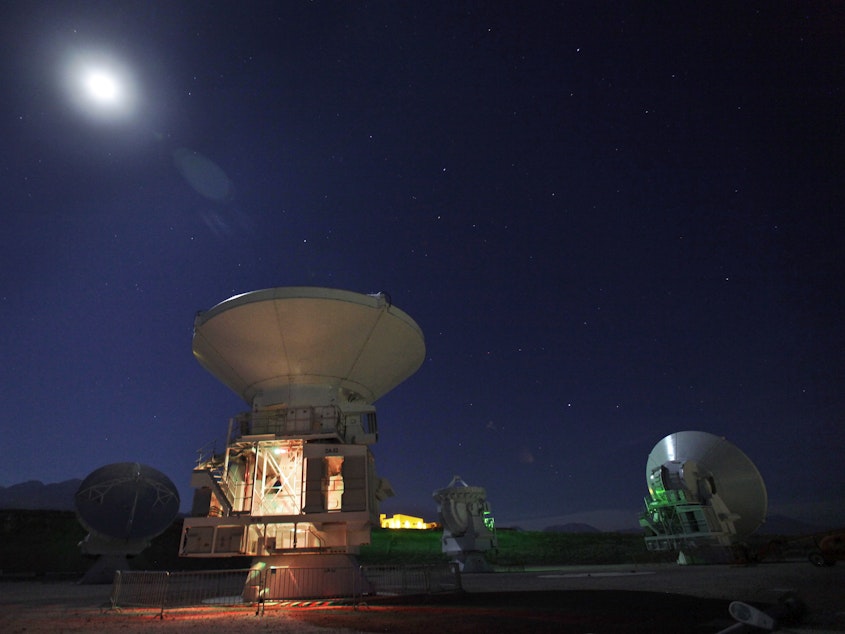NASA is looking for a framework to better help you understand its deep space finds

Is there life on other planets? It's a simple question without a simple answer.
"The expectation, in particular with the public, is a yes-or-no answer. Did you find it or didn't you find it?" Jim Green, NASA's chief scientist, told NPR.
But Green says the reality is much more complex. One scientific discovery about extraterrestrial life may give us a small new insight into the universe, but it may be exaggerated by researchers or misunderstood by the public.
The discovery of the meteorite ALH 84001 — which ignited excitement about the possibility of life on Mars — is one example from history.
Green walks us through another example. Say a scientist is looking at a distant exoplanet roughly the size of Earth, roughly the same distance from a star, with oxygen and clouds in its atmosphere. That means vegetation on the surface of the planet may be generating the oxygen in the atmosphere, and it's possible we've just found life outside our solar system!
Sponsored
"Well, I got news for you, we know that planet, and that planet is Venus," Green said. "We see oxygen in the atmosphere of Venus, and I can guarantee there is no vegetation on the surface of Venus. So that one observation, although it sounded great, doesn't give us the confidence to lean forward and say we found life or could have found life."
Just because a planet could support life doesn't mean it ever has or will.
"That extrapolation may have absolutely no basis in the science that they've done," he said, referring to researchers, "and potentially could mislead the community into saying we have found life or we're closer to finding life without a really good scale as to how far away that really is."
That's why Green and NASA are proposing a scale to better contextualize new findings in research about extraterrestrial life and help explain those discoveries to the public.
In an article in Nature, Green and other NASA scientists propose a seven-step rubric for understanding new discoveries. It starts with the remote detection of something that could hint at life and progresses to ruling out non-biological factors, making actual observations and finally conducting follow-up observations to be sure that life exists.
Sponsored
The scientists say their scale is just a proposal, and they're looking for the scientific community to weigh in and improve it.
According to the article, an objective standard is needed now because the current generation of scientists may be the one to discover life beyond Earth.
"Without the scale, it's hard to tell we're making progress, we're going in the right direction," Green said. [Copyright 2021 NPR]



